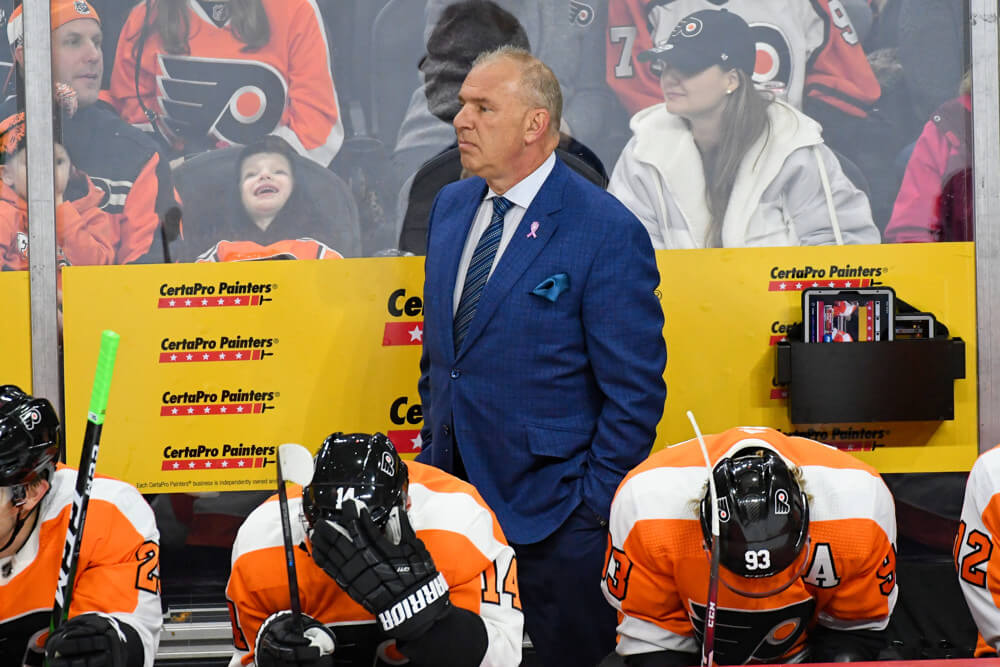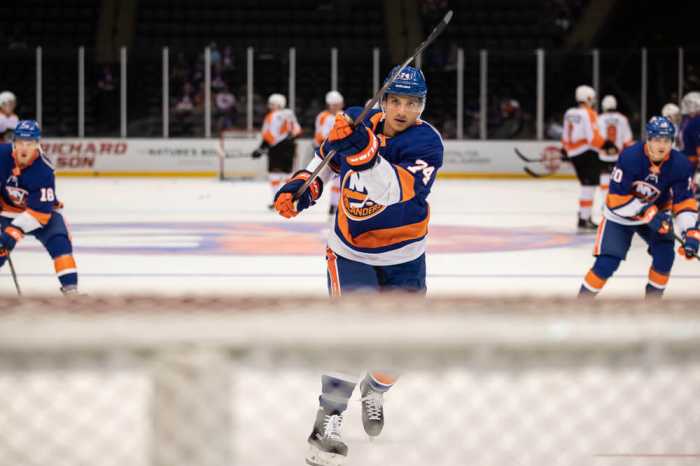Throughout the playoffs, the Flyers got no help from the man-advantage. Ok, four goals were scored on the Flyers powerplay, so “no help” isn’t entirely accurate. However, converting on 7.7% of your powerplays isn’t exactly going to help you win games and advance through the playoffs. That was no more evident than their series against the New York Islanders.
Point shots galore and the same unit night in and night out weren’t enough to convert even at the NHL average of 20.03%. It was substantially lower than the league average. This begs the question: who is at fault for the woeful powerplay during the playoffs?
Are we going to pin the blame on the captain? It seems the logical choice, especially if you’ve been following the right, or wrong depending on where you stand, people on social media. How about Jakub Voracek, who seemed to disappear after a great Montreal series. How about Travis Konecny, who only pitched in five assists after leading the team in scoring during the regular season? Better yet, should the blame fall squarely on the shoulders of the man pulling the strings, Michel Therrien?
The Chicken or the Egg?
All of these could be legitimate reasons why the powerplay was lacking during the playoffs. The fact remains, there’s a root to all these problems, and we don’t know what that root is. It’s a matter of perspective. Are the players not performing because the system doesn’t work, or are the players not contributing making the system fail?
Considering the Flyers finished the 2019/20 regular season converting 47 of 226 powerplays, good for 20.8% and fourteenth in the NHL, the system was definitely working. However, the Flyers scored all 47 of their powerplay goals in 35 games during the regular season, leaving 34 games where they didn’t. The key to a system working is consistency, and it’s hard to argue that they converted at a consistent pace.
Looking even further down the rabbit hole, there were four occasions where the Flyers went three or more games without a powerplay goal. From November 30 to December 14, they went six games without a tally on the man-advantage. They went four games from January fourth to the eleventh without a powerplay goal as well. Sure, it’s not abnormal to not score every single game, but those elongated stretches are sure cause for concern.
The Playoffs
Where the Flyers hit a roadblock of sorts was the playoffs. In the round robin round, the Flyers failed to convert on two attempts against Boston, six attempts against Washington, and three attempts against Tampa Bay. Each of those teams possess a penalty kill in the top-14 of the entire NHL, but it’s no excuse considering how the Flyers outplayed each of those teams.
Things were looking a little better when they took on Montreal. The Canadiens gave up 17 penalties in their series against the Penguins, and the Flyers were looking to feast on the undisciplined nature of the Habs. That was far from the truth, even being given 28 opportunities in six games. They converted four times for a rate of 14.29%. Game six ended, and the Flyers shifted their focus to a more defensively stout team in the New York Islanders.
The Isles have one of the stingiest defensive units in the NHL, and they don’t take many penalties. This was going to be a test of whether the Flyers can make it count when they aren’t being given countless opportunities on the powerplay. New York committed 13 penalties, and killed off every single one of them. The Flyers failed the test, and looked bad in the process.
Overall, the Flyers converted four of their 52 powerplays during the playoffs. For those that aren’t good at math, that’s a 7.7% conversion rate, and no, it’s not good. For a team that converted 20.8% of their powerplays during the regular season, the unit was putrid in the playoffs, and almost certainly a main reason why the team was ousted in the second round.
Who’s To Blame?
The onus is almost always on the players to perform regardless of the system in place. That mindset makes complete sense, but when it isn’t working and the players are struggling, that onus shifts to the coach to make the necessary adjustments. What we saw in the playoffs was the same song and dance every powerplay. Much the same players on each unit, much the same result. Giroux to Provorov, Provorov to Giroux, Giroux to Voracek, back to Giroux, back to Provorov and a shot from the point. Turn it on, blast it, and put it on repeat.
Michel Therrien did very little to mix things up on the powerplay throughout the playoffs. The system remained the same, that is, it remained broken. You can point fingers at the lack of production from guys like Giroux and Konecny, but at the end of the day, a coach needs to account for that and make the necessary adjustments. After failing to convert on 13 opportunities in the round robin and not tweaking your approach to the powerplay, the fault lies with the man in charge.
While the players didn’t perform up to task on the man-advantage, the coach didn’t help matters by keeping them in after multiple bad showings. The old saying goes, you can’t fit a square peg into an oval-shaped hole. You can’t keep a player who isn’t scoring on a unit that is meant to score.
Mandatory Credit – Andy Lewis/Icon Sportswire






























